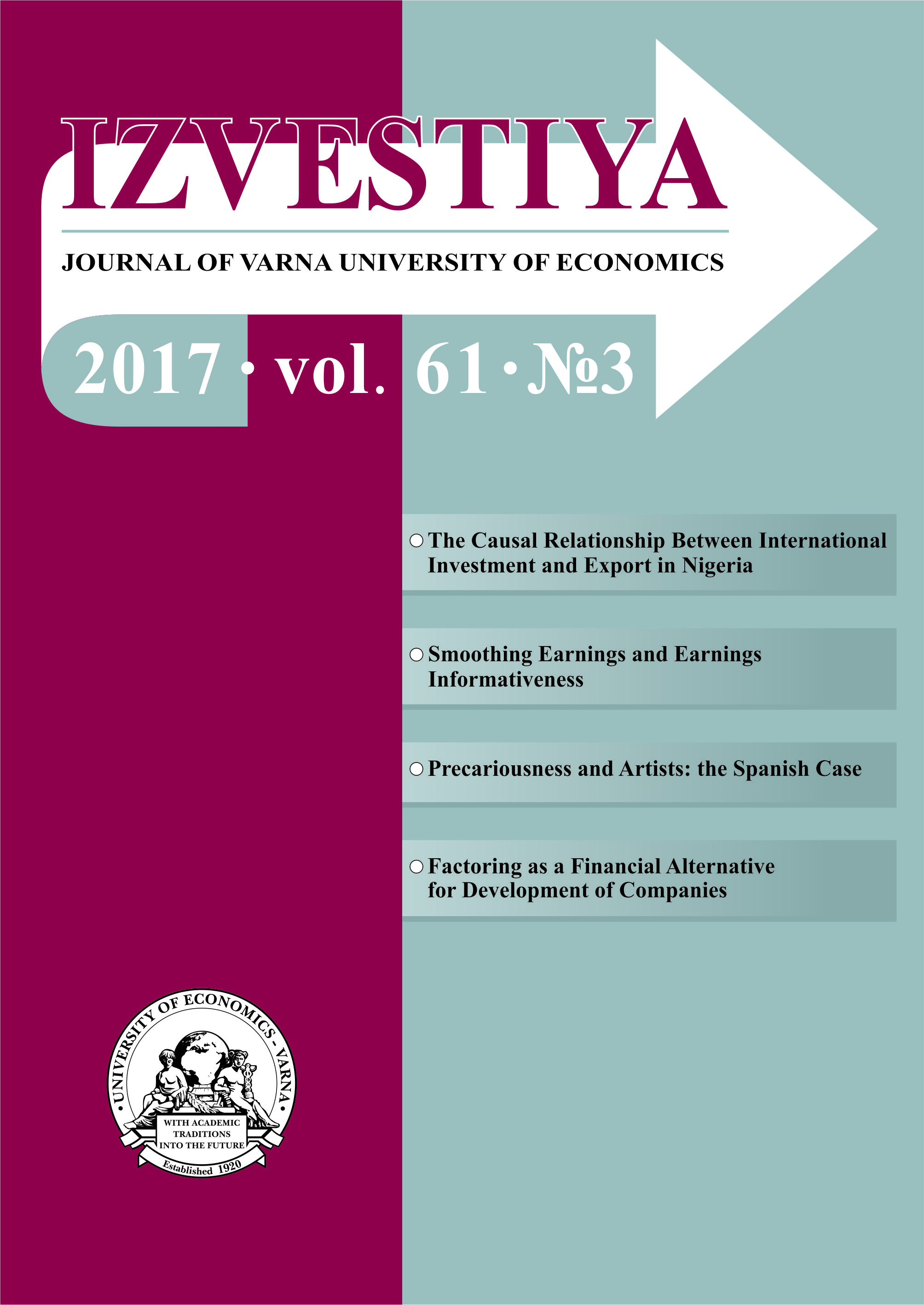The Causal Relationship between International Investment and Export in Nigeria
The Causal Relationship between International Investment and Export in Nigeria
Author(s): Moruff Sanjo Oladimeji, Lucas Okah Elumah, Peter Babatunde ShobayoSubject(s): National Economy, Business Economy / Management
Published by: Икономически университет - Варна
Keywords: Foreign direct investment; Foreign portfolio investment; Total trade (TT); Exchange rate; International investment
Summary/Abstract: This paper sought to examine the impact of international finance on business activities in Nigeria using time series data dating from 1981-2014.Ex post-facto type of descriptive research design was adopted in carrying out this study and the secondary statistics data sourced from CBN statistical bulletins, National Bureau of Statistics, and NSE Statistical Bulletins were used. Total export was adopted as a proxy for business activities in Nigeria while foreign portfolio investment and foreign direct investments were used as proxy for international finance. The data were analyzed using Ordinary Least Square Method. The estimates indicate that international finance which is proxied by Foreign Direct Investment (FDI) and Foreign Portfolio Investment (FPI) has a negative impact on Nigeria business activities both in the long run and short run. The short run effect of international finance on business activities shows that the ECM parameter represented with ECM (-1) is significant at 10%, with a coefficient of -0.6980. The long run effect of international finance and business activities in Nigeria shows a coefficient of a period lag of total trade (TT) of 0.8613, which implies that a negative relationship exists between a year lag in TT and present total trade. It is recommended that developing countries like Nigeria can increase its business activities by attracting more FDI and FPI inflows and removing the artificial barriers to free flow of FDI and control on exports and imports and also, an open and export-oriented policy can be promoted with lower tariffs and allowing free mobility of capital
Journal: Izvestiya. Journal of Varna University of Economics
- Issue Year: 61/2017
- Issue No: 3
- Page Range: 211-221
- Page Count: 11
- Language: English

